To prepare a little toy example:
import pandas as pd
import numpy as np
high, size = 100, 20
df = pd.DataFrame({'perception': np.random.randint(0, high, size),
'age': np.random.randint(0, high, size),
'outlook': pd.Categorical(np.tile(['positive', 'neutral', 'negative'], size//3+1)[:size]),
'smokes': pd.Categorical(np.tile(['lots', 'little', 'not'], size//3+1)[:size]),
'outcome': np.random.randint(0, high, size)
})
df['age_range'] = pd.Categorical(pd.cut(df.age, range(0, high+5, size//2), right=False,
labels=["{0} - {1}".format(i, i + 9) for i in range(0, high, size//2)]))
np.random.shuffle(df['smokes'])
Which will give you something like:
In [2]: df.head(10)
Out[2]:
perception age outlook smokes outcome age_range
0 13 65 positive little 22 60 - 69
1 95 21 neutral lots 95 20 - 29
2 61 53 negative not 4 50 - 59
3 27 98 positive not 42 90 - 99
4 55 99 neutral little 93 90 - 99
5 28 5 negative not 4 0 - 9
6 84 83 positive lots 18 80 - 89
7 66 22 neutral lots 35 20 - 29
8 13 22 negative lots 71 20 - 29
9 58 95 positive not 77 90 - 99
Goal: figure out likelihood of outcome, given {perception, age, outlook, smokes}.
Secondary goal: figure out how important each column is in determining outcome.
Third goal: prove attributes about distribution (here we have randomly generated, so a random distribution should imply the null hypothesis is true?)
Clearly these are all questions findable with statistical hypothesis testing. What's the right way of answering these questions in pandas?

